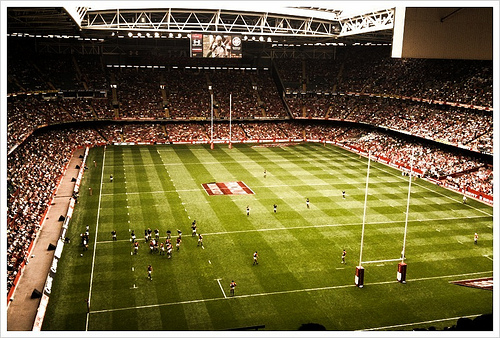By sports physician and President of the South African Sports Medicine Association
– Dr Glen Hagemann
As a parent it is impossible to fully comprehend what it is like to lose a child. My sincere condolences thus go out to the parents of the young teenage rugby player from Grey Town who recently collapsed and died while playing in a game. The only positive that one might be able to glean from such a tragedy is that we must use events like these to learn something, hopefully with the objective of saving a life in the future.
I advocate that all athletes, young and old, be screened by a doctor for underlying heart abnormalities that may be the cause of sudden death on the sports field. This message attains even greater significance in the light of the above.

When someone collapses from a cardiac cause, whether it be a child, teenager or adult, the single intervention that is most likely to determine whether or not that person survives, is whether or not a defibrillator is on hand to shock that person’s heart back into action within a few minutes, before the onset of permanent brain damage. Successful resuscitation of a collapsed patient is enhanced significantly by the use of AEDs – automatic external defibrillators.
Nowadays, these devices cost around around 15,000 SA Rand and they are designed for use by the lay person. Known as Automatic External Defibrillators, all that is required is for two self-adhesive pads to be placed on the collapsed patient’s chest, and the machine takes over, reading the rhythm of the heart and deciding whether or not to automatically deliver a shock to the patient. The device even “talks” to you, advising the course of action and issuing instructions.
You may find AEDs in shopping centres, on commercial aeroplanes, in sports stadiums, at airports, in gyms and at other public places where crowds are expected. In my opinion, every school should also strive to acquire one. Yes, it is an expense, but if it saves one life, it is a good investment. To avoid sounding naïve, I appreciate that many schools do not have the resources for such fundamentals as books and desks, let alone a costly AED, and this raises a separate debate. However, many schools can, with innovative thinking and action, acquire an AED.
The message then is to encourage schools to invest in an AED, to train teachers in basic cardiopulmonary resuscitation (CPR) and to have a widely publicised emergency protocol in place to deal with these events. The AED must be left in a highly visible and accessible place, so that if a pupil, teacher or parent collapses, everyone knows where the AED is and what to do.
Tragic events like these do happen…..let’s just ensure that we are all in the best possible position to deal with them efficiently and effectively and thus, save a life in the process. There is no doubt about it – these devices work when used in the first two minutes after a collapse.
*********************************************
Dr Glen Hagemann is President of the South African Sports Medicine Association and director of the Discovery Sharksmart Programme.